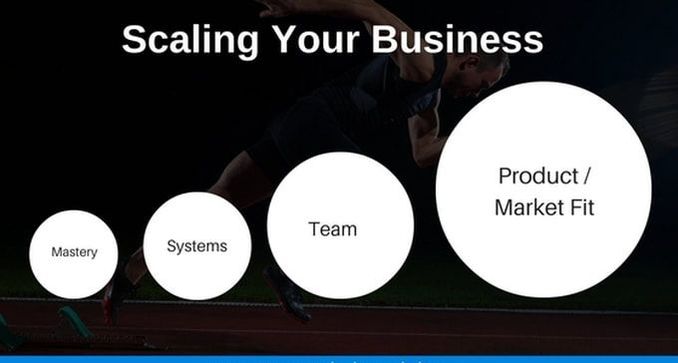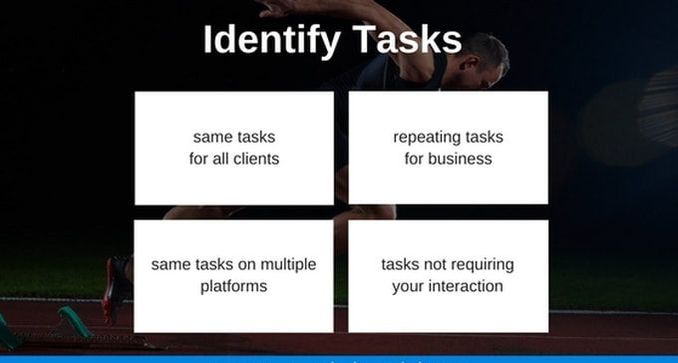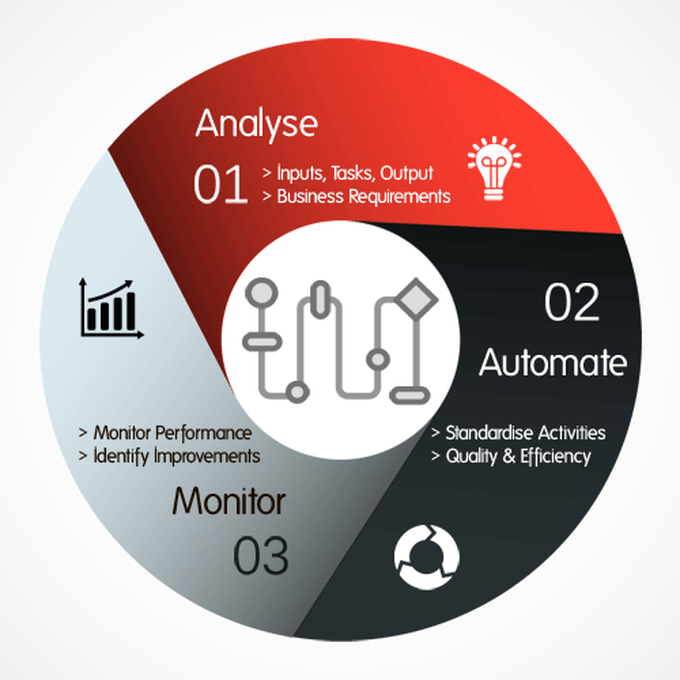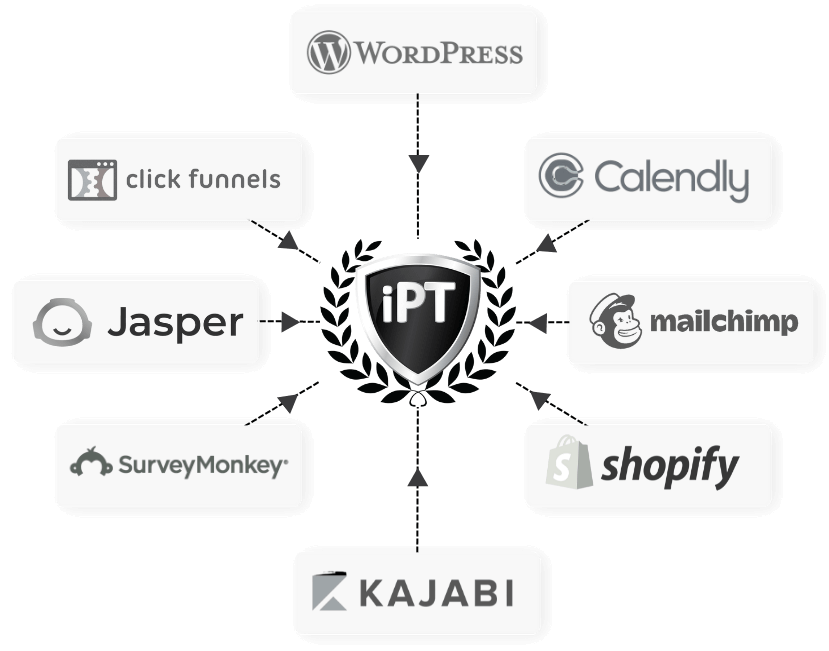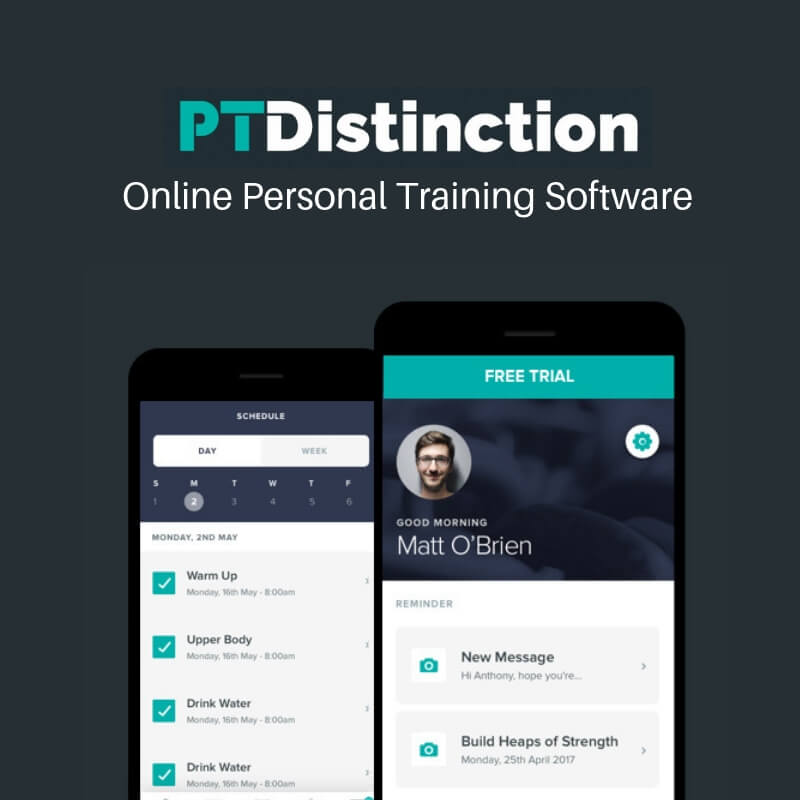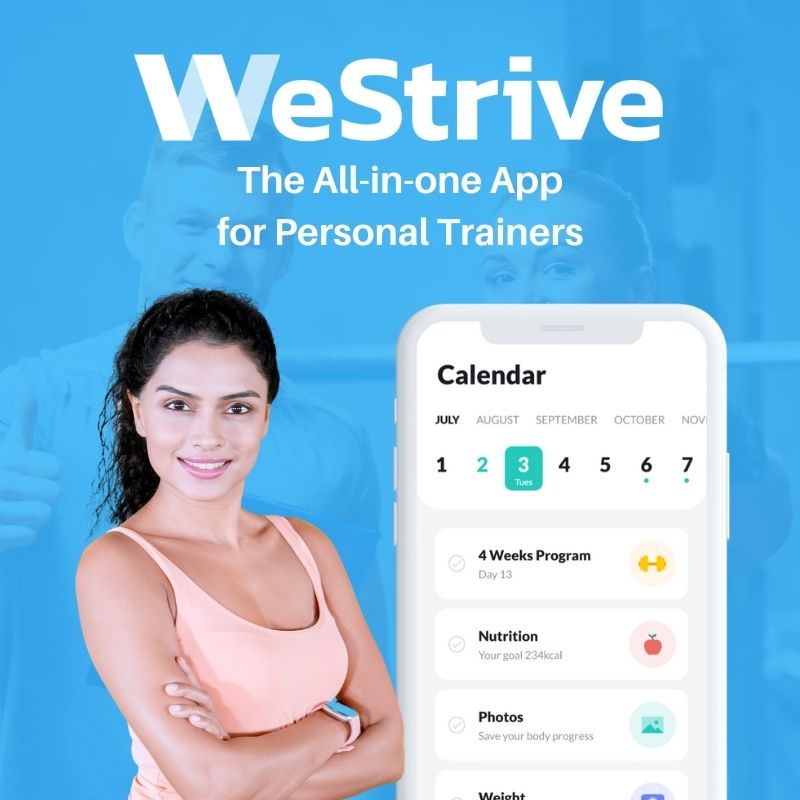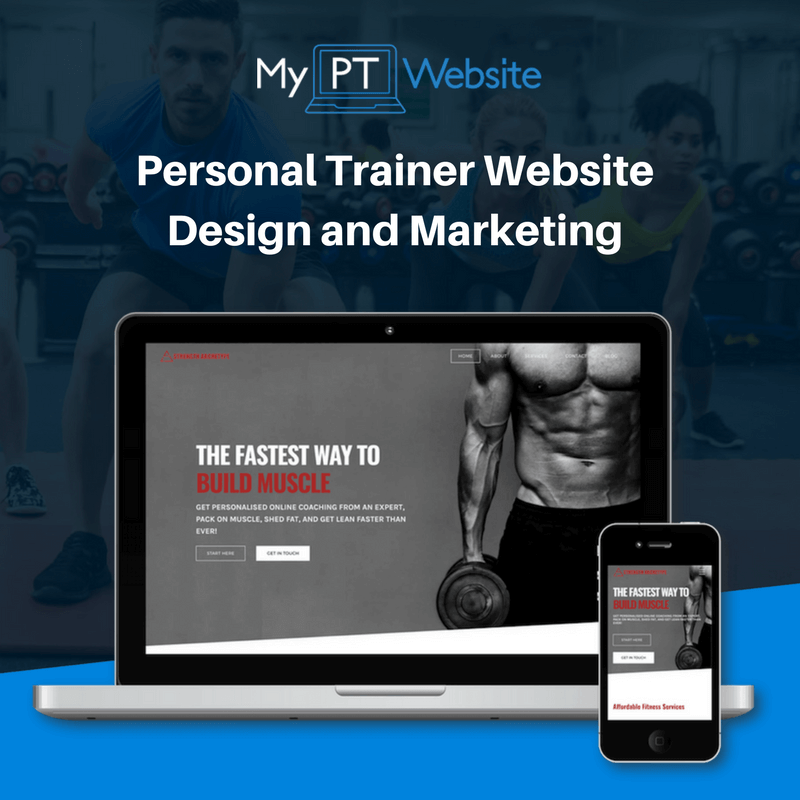Learn More About Scaling an Online Training Business
What You'll Learn
In this guide you'll learn the basic first steps to systemising and scaling your online business so you can create more free time while increasing profits.
Why is This Important?
Every successful online training business gets to a point where the workload is so high that systems are needed to take some of the weight off. If you don't learn how to systemise and scale, you stand still. And standing still can be the death of your online fitness business.
In this guide you'll learn the basic first steps to systemising and scaling your online business so you can create more free time while increasing profits.
Why is This Important?
Every successful online training business gets to a point where the workload is so high that systems are needed to take some of the weight off. If you don't learn how to systemise and scale, you stand still. And standing still can be the death of your online fitness business.
Understanding Scaling and Systems
If you’re running your own online personal training business, there isn’t a day that goes by when you’d say “I’m not that busy today.” It just doesn't happen.
There is never a shortage of things to do. For every client support question you cross off of your checklist, there are four more to add onto your plate. You work long hours, often sacrificing things like time with the family, nights out and a relaxing weekend.
For many online fitness business owners it can feel like you’re running on the spot. You’re keeping your business afloat, but you lack the time and energy to focus on taking things to the next level.
Sound familiar?
Now that you’re thinking about the long-game, take a minute to visualize where you see your business heading in the next six months, year, three years...
There is never a shortage of things to do. For every client support question you cross off of your checklist, there are four more to add onto your plate. You work long hours, often sacrificing things like time with the family, nights out and a relaxing weekend.
For many online fitness business owners it can feel like you’re running on the spot. You’re keeping your business afloat, but you lack the time and energy to focus on taking things to the next level.
Sound familiar?
Now that you’re thinking about the long-game, take a minute to visualize where you see your business heading in the next six months, year, three years...
If you’re running a high end coaching service, your vision might include things like attracting more clients, or attracting larger clients with higher-budget projects.
If you're running low end memberships then you're probably looking for ways to support an increasing number of lower paying clients.
That might lead you to grow your staff beyond just yourself, and transition from being a solo personal trainer to a full on business owner.
The bottom line is this: You can’t begin to move your business forward until you establish which direction you’re headed. Take some time — yes, schedule it into your calendar — to give some serious thought about where you are today and where you want to be by next year.
If you’re running a high end coaching service, your vision might include things like attracting more clients, or attracting larger clients with higher-budget projects.
If you're running low end memberships then you're probably looking for ways to support an increasing number of lower paying clients.
That might lead you to grow your staff beyond just yourself, and transition from being a solo personal trainer to a full on business owner.
The bottom line is this: You can’t begin to move your business forward until you establish which direction you’re headed. Take some time — yes, schedule it into your calendar — to give some serious thought about where you are today and where you want to be by next year.
Identifying What Can Be Systemised
Ready to begin the process of systemising your online fitness business? Start by identifying the recurring tasks, or the tasks that arise again and again, eating up precious time in your daily or weekly routine. These are prime targets for systemisation.
It can be tempting to think that every day is different, every client is different. You might think there is nothing that can be “standardised” in your business. Everything you do is unique because each client is unique.
But once you really give it some thought, you’d be surprised how many repetitive tasks rise to the surface. Take a step back and review what you worked on today. Look at what you did yesterday. Look at the list of things you worked on last week. There are probably lots of tasks that can be turned into systems.
It can be tempting to think that every day is different, every client is different. You might think there is nothing that can be “standardised” in your business. Everything you do is unique because each client is unique.
But once you really give it some thought, you’d be surprised how many repetitive tasks rise to the surface. Take a step back and review what you worked on today. Look at what you did yesterday. Look at the list of things you worked on last week. There are probably lots of tasks that can be turned into systems.
Here are a few examples that apply to almost any PT business:
- preparing and sending client invoices
- bookkeeping and organising your records
- customer support and answering the most common questions
- preparing and sending email newsletters
- preparing coaching proposals
- cross-browser website testing
- validating your code
- preparing workouts delivery
- writing and emailing nutrition programs
- proofreading
- formatting and scheduling articles
- background research
- social media sharing of content
The list will go on for your particular business and the way you do things. The idea is to start identifying the tasks that can be systemised — and ultimately delegated — to someone else to handle while you focus on more important things.
Start Documenting Procedures
Now that you’ve identified a few tasks that can be systemised, it’s time to begin documenting them into step-by-step procedures.
These procedures will become the backbone of your business; they’ll serve as the operating manual to keep your business churning. Your procedures will become a key asset to your business, as future employees will rely on them to execute their jobs. It will also make the process of hiring and training new employees totally seamless, avoiding the usual setbacks that come with employee turnover.
When documenting procedures, the key is to be as detailed as possible. No detail is too obvious or self-explanetory.
Even if you’re still a one-person operation, it’s important to begin documenting your procedures sooner rather than later. This will help you lay the groundwork as you prepare to hire your first employee.
When documenting procedures, the key is to be as detailed as possible. No detail is too obvious or self explanatory. Include every step, sub-step, and explanation as you document your procedure.
Start by providing an “overview” of the procedure, to give the person some context as to why this procedure is important and what the desired outcome is. Then I start from the beginning and include every step to get there.
These procedures will become the backbone of your business; they’ll serve as the operating manual to keep your business churning. Your procedures will become a key asset to your business, as future employees will rely on them to execute their jobs. It will also make the process of hiring and training new employees totally seamless, avoiding the usual setbacks that come with employee turnover.
When documenting procedures, the key is to be as detailed as possible. No detail is too obvious or self-explanetory.
Even if you’re still a one-person operation, it’s important to begin documenting your procedures sooner rather than later. This will help you lay the groundwork as you prepare to hire your first employee.
When documenting procedures, the key is to be as detailed as possible. No detail is too obvious or self explanatory. Include every step, sub-step, and explanation as you document your procedure.
Start by providing an “overview” of the procedure, to give the person some context as to why this procedure is important and what the desired outcome is. Then I start from the beginning and include every step to get there.
Success Criteria for Procedural Writing
- State the Goal (What is the procedure written for? What is the outcome of the task?)
- Include Materials/Tools Needed (software, apps, state them all if there are more than one)
- Step by Step Instructions
- Overview
It’s incredibly important that your procedures aren’t just a long text document without any visuals. Long blocks of text are incredibly hard to follow and make it too easy for the person to mistakenly skip over an important detail.
Include images (screenshots) and/or videos to add clarity to each step. If your team works remotely, and most online businesses do these days, then you know how important it is get your point across visually, since you don’t have the luxury of sitting next to the person and demonstrate how it’s done.
Try to include at least one screenshot with every step. Add notations to the images, like boxes and arrows.
If you really need to make sure you get your point across or have a particularly complex task to be completed, record a screencast video and embed that video in a particular step in the procedure.
There are various tools that make it easy to record screencast videos. For short recordings (less than 5 minutes), use Screenr because it is browser-based and easy to fire up quickly. For longer recordings, try ScreenFlow on the Mac. Camtasia is a good alternative for those on Windows.
Delegating Tasks
In the beginning, the best online personal trainer will execute the procedures themself, just as you’ve been doing. Only now, make a point of following along with the procedures you’ve created to confirm you haven’t skipped over any details. Every time you do this, you'll find at least one thing you’ve forgotten to include.
You'll be able to delegate a whole bunch of business tasks to softwares that do your job for you, but automatically.
Social Media
Meet Edgar is without a doubt the best social media automation tool. You can set up months worth of evergreen posts and Meet Edgar will post them and recycle old posts on your behalf. Especially useful if you're running a Facebook Group that needs constant updates.
Email
Mailchimp, Aweber and pretty much any email client can automate a series of emails for you to help you with a long term programme that requires a client to access drip fed content.
Client Management
One of the best apps for managing clients (not creating workouts) is 17Hats. 17Hats can manage all of your invoices, emails, workflows and leads, all in one place.
Client Support
Zendesk is an incredibly affordable tool for creating support portals where you can host procedures and answer common questions for clients.
Once you've automated as much as you can, consider hiring your first employee or a virtual assistant. Check out some of the top virtual assistant companies by clicking on a logo below.
You'll be able to delegate a whole bunch of business tasks to softwares that do your job for you, but automatically.
Social Media
Meet Edgar is without a doubt the best social media automation tool. You can set up months worth of evergreen posts and Meet Edgar will post them and recycle old posts on your behalf. Especially useful if you're running a Facebook Group that needs constant updates.
Mailchimp, Aweber and pretty much any email client can automate a series of emails for you to help you with a long term programme that requires a client to access drip fed content.
Client Management
One of the best apps for managing clients (not creating workouts) is 17Hats. 17Hats can manage all of your invoices, emails, workflows and leads, all in one place.
Client Support
Zendesk is an incredibly affordable tool for creating support portals where you can host procedures and answer common questions for clients.
Once you've automated as much as you can, consider hiring your first employee or a virtual assistant. Check out some of the top virtual assistant companies by clicking on a logo below.
Now it’s time to give them something to do!
Good thing you’ve documented a few procedures. Send them a procedure and tell them to follow it every time they execute this task.
Test, Tweak, Improve, Repeat
Now that you’ve begun delegating those procedures, you should start to feel a sense of relief. Things are getting done, but taking up less of your time, which has freed you up to focus on more important activities.
But your work is far from complete! You must continously monitor your systems and processes, tweak and improve them to make them more efficient.
There are several ways to do this:
Monitor Efficiency, Especially in the Beginning
Are there any steps that are tripping up your team? Were certain aspects done incorrectly? These reveal immediate areas where you can troubleshoot your procedures. Look for ways to add more clarity or address common misunderstandings.
You must continously monitor your systems and processes, tweak and improve them to make them more efficient.
Encourage Your Team to Suggest Improvements to Procedures
As time goes on, you will become detached from the nuances of how things work “on the ground”. That’s okay. It means you’re focusing on big-picture things, which is what you’re supposed to be doing.
Luckily, you have someone who does have intimate knowledge of the nuances of your procedures: Your employees who are executing them! Empower them to give their suggestions on ways to improve procedures when they encounter a better way of doing it. Ask them to leave comments on the procedure itself, or simply send their suggestions directly to you.
Be on the Lookout for New Technologies and Techniques to Streamline Procedures
In the online world, things move fast. New tools are constantly becoming available that make our jobs infinitely easier than they once were. Your procedures can benefit from new tools as they come to market.
Always be on the lookout for these and ask your employees to look out for these as well. Over the course of a year, you might find a new tool or technique that can shave multiple steps off your procedures, making your entire business more efficient.
But your work is far from complete! You must continously monitor your systems and processes, tweak and improve them to make them more efficient.
There are several ways to do this:
Monitor Efficiency, Especially in the Beginning
Are there any steps that are tripping up your team? Were certain aspects done incorrectly? These reveal immediate areas where you can troubleshoot your procedures. Look for ways to add more clarity or address common misunderstandings.
You must continously monitor your systems and processes, tweak and improve them to make them more efficient.
Encourage Your Team to Suggest Improvements to Procedures
As time goes on, you will become detached from the nuances of how things work “on the ground”. That’s okay. It means you’re focusing on big-picture things, which is what you’re supposed to be doing.
Luckily, you have someone who does have intimate knowledge of the nuances of your procedures: Your employees who are executing them! Empower them to give their suggestions on ways to improve procedures when they encounter a better way of doing it. Ask them to leave comments on the procedure itself, or simply send their suggestions directly to you.
Be on the Lookout for New Technologies and Techniques to Streamline Procedures
In the online world, things move fast. New tools are constantly becoming available that make our jobs infinitely easier than they once were. Your procedures can benefit from new tools as they come to market.
Always be on the lookout for these and ask your employees to look out for these as well. Over the course of a year, you might find a new tool or technique that can shave multiple steps off your procedures, making your entire business more efficient.
Your Business is Systemized. Now What?
With a library of standard operating procedures powering your business, you’ve built a machine that runs itself! You have set the stage for an exciting phase of scalability and growth.
So where do you go from here?
You as the business owner can stop being tied down working in your business. Now you can start working on your business.
With your new-found freedom, you can spend more time focusing on things like:
- transitioning from a one-man-operation to hiring a team
- transitioning from client work to products
- improving your products or creating new ones
- attracting and landing more/better clients
- enjoy some free time and win back your work/life balance


